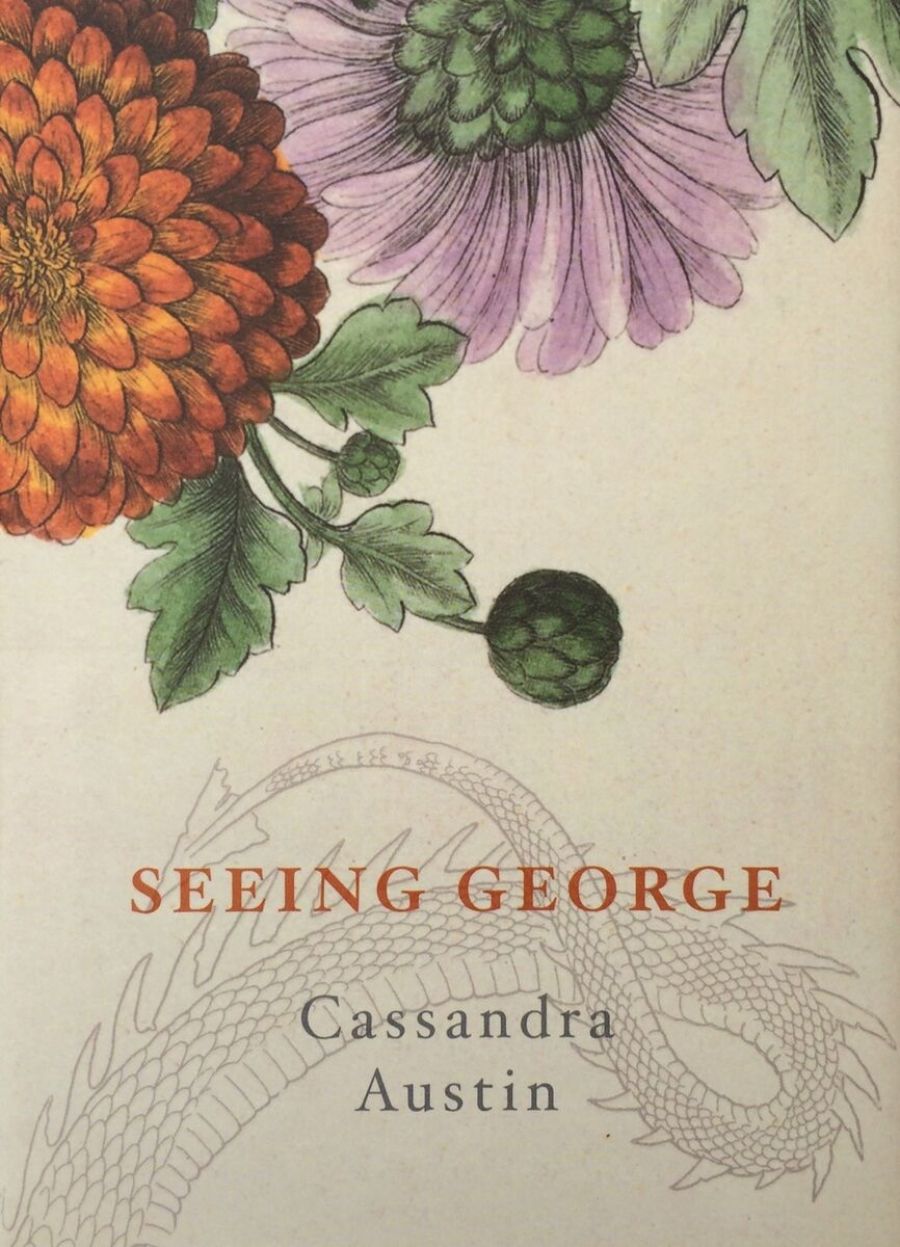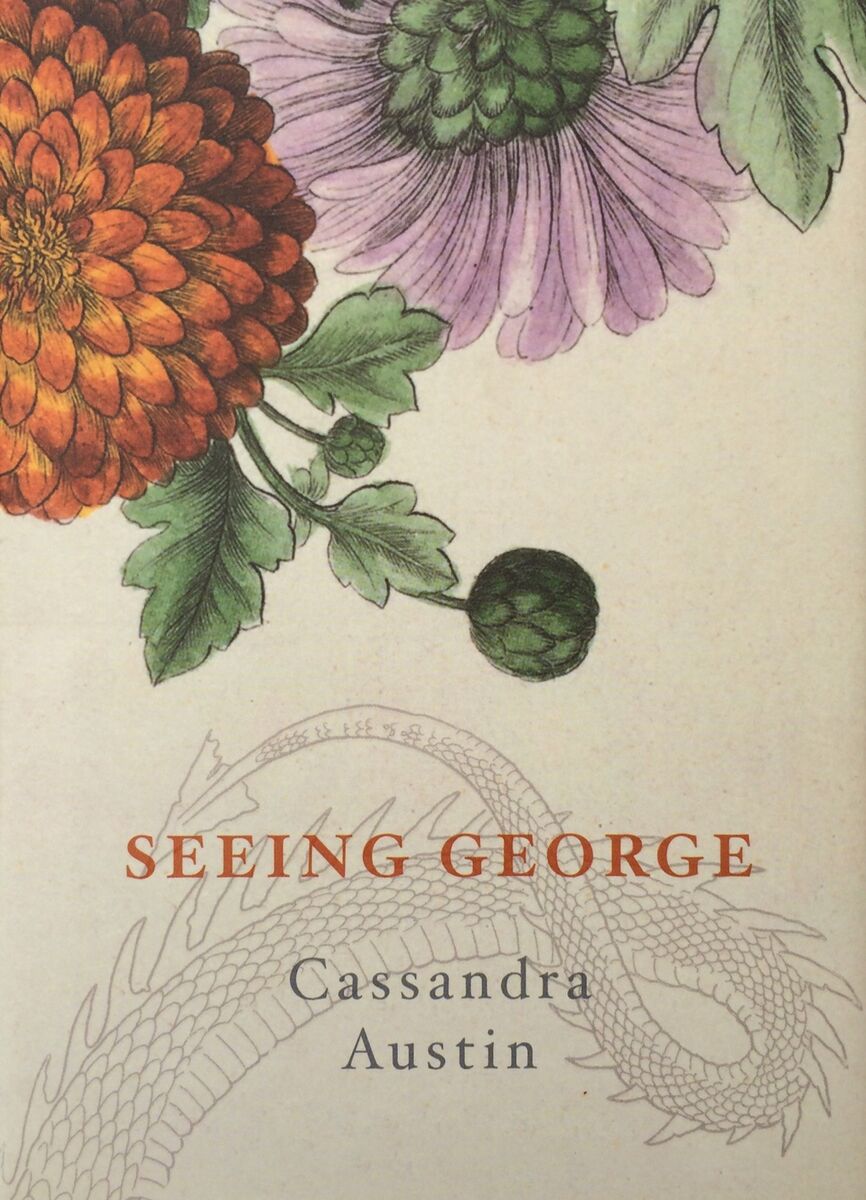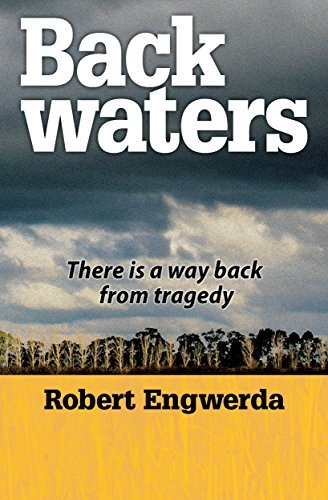
- Free Article: No
- Contents Category: Fiction
- Review Article: Yes
- Article Title: Promising Débuts
- Online Only: No
- Custom Highlight Text:
Of these three début novels, John Honey’s Paint is by far the richest: the only one that has the feel of a world turning as its pages ever more rapidly must be turned. Honey has created characters that matter to the reader and offers a truly immersive reading experience.
- Book 1 Title: Seeing George
- Book 1 Biblio: Random House, $29.95hb, 267pp
- Book 1 Cover Small (400 x 600):

- Book 1 Cover (800 x 1200):

- Book 2 Title: Backwaters
- Book 2 Biblio: Bystander Press, $24.95pb
- Book 2 Cover Small (400 x 600):

- Book 2 Cover (800 x 1200):

- Book 3 Title: Paint
- Book 3 Biblio: Red Hill Books, $29.95pb, 318pp
- Book 3 Cover Small (400 x 600):

- Book 3 Cover (800 x 1200):

Honey’s descriptions are luscious, drawing the reader with him as he colours his way through images of the Tasmanian bush. Boris’s paintings, houses built by blokes in the bush, and endless picnics and feasts. Food and wine are big in Paint: no meal is too small to be turned into a feast of one kind or another: from the picnic Boris lays on for a first date with a woman named Shelley Beach, whereby he takes her into a secluded clearing deep in the forest, whips out his chainsaw and makes instant dining furniture from a large fallen tree; to the get-together with a group of vet bikers in another hand-built bush house whose kitchen is equipped with a commercial deep fryer.
The storyline is terrific, weaving between descriptions you can almost taste and smell; relationships that are complex, poignant and simple at the same time; and a suspense-filled chase after Ferret and co., and their antics. Life is not kind to Boris, but it is certainly not boring. Paint is an exhilarating read. What mars it, though, is a lack of attention to editorial details. Structurally, the novel is tight and beautifully paced. Readers are guided through its layers with the help of gentle, steady Boris. But necessary commas are missing all over the place, especially in dialogue and typos abound throughout the novel. These minor surface errors are all the more irritating because Paint deserved better.
Seeing George, by Cassandra Austin, is a gorgeous-looking book: a small hardback with embossed violet endpapers. But when it’s flipped over, the effect is deflated by the single question printed in italics on the back: ‘Do you believe in creatures at the bottom of garden?’ This cloying, clichéd expression is indicative of what spoils an otherwise promising first novel.
Inside, the blurb describes the book as ‘a fairy tale for adults’. Indeed, the eponymous George is not ordinary: he could be found in a fairy tale. Why does George need to be extraordinary in the way that he is? Overall, this is quite a well-crafted first novel. The author shows skill and delicacy in her imagining of characters and storyline. The relationships Austin creates are nuanced and provocative. We encounter the three main characters, Violet, Frank and George, both fifty years after they first met and as they were fifty years ago. These two time frames shift effortlessly between alternating chapters. The depictions of 1950s settings and consciousnesses are particularly enjoyable. Matters of loyalty, fidelity and intertwining affections are dealt with coyly. A delightful sense of cloistered emotions develops: wild desires seep out of genteel, restrained exteriors. Violet and Frank are charming characters who try hard not to appear unseemly.
George is jolly and large. He gives the flighty but proper Violet and grumpy, stubborn Frank a good stirring-up over the years, until the present, when the relationships between the three of them have reached a crisis point as Violet grows frail. It is the ‘fairy tale’ aspect of Seeing George that is its downfall, even though, ironically, it appears to be the point of the novel. Parts of the novel relating to the ‘fairy tale’ angle are clichéd and banal. They provide some humour now and then, but are otherwise tiresome, offering nothing new, fresh or provocative. Without those elements, this could have been a more accomplished novel.
In some ways, Backwaters, by Robert Engwerda, combined elements of the previous two novels. Like Paint, Backwaters treats a series of different relationships with some delicacy. It is a deeper, more convincing narrative than Seeing George, but it lacks Austin’s control. Engwerda’s movement between time frames is sometimes difficult to follow. There is the here and now; the recent past, when the main character, Tom Lakeman, was involved in a tragic accident bound up with a short-lived extra-marital dalliance; and the distant past of Tom’s childhood. At times, this makes for a disorienting experience, but there is also a sense that the mixed chronology adds emotional complexity and texture to the novel.
Backwaters has a lonely, windswept feel that links in with its main setting, northern Victoria. The novel’s mood, like the landscapes, is dry and quiet, reminiscent of crops and wild grasses shifting in wind, sparse clouds raked over hot, hard blue skies.
Tom Lakeman, a schoolteacher, is troubled. He is on a beach holiday with his wife and children, patching things up after an affair and an accident for which he carries a heavy burden of guilt. But it is hard to patch anything up when one is wounded and depressed, and when the buried past suddenly seems locked into a cycle with recent events. Tom is grieving about old losses and haunted by memories of the kinds of conundrums and confusions that keep children – and the adults those children become – thrashing and sweating away in their sleep at night. Now he has new losses to confront; his mind is all over the place.
Backwaters is slow at the outset, in no small part due to simple, distracting faults shared in some ways with Paint: faults that needed to be fixed in the editing process. Otherwise, Engwerda shows skill in his gentle approach and in his control of the narrative, portraying the sadness but also the vividness of Tom Lakeman’s emotional life, and making Backwaters haunting and resonant in places. But the novel’s power is dissipated by poor dialogue, which is clichéd and peppered with expressions that may well be true to everyday speech but that seem bland and pointless in fiction.
Engwerda has written an engaging story, peopled with convincing characters and grounded in finely described settings. To truly shine, as John Honey’s Paint does, Backwaters needed to be pushed through more drafts until its quality was even throughout.


Comments powered by CComment